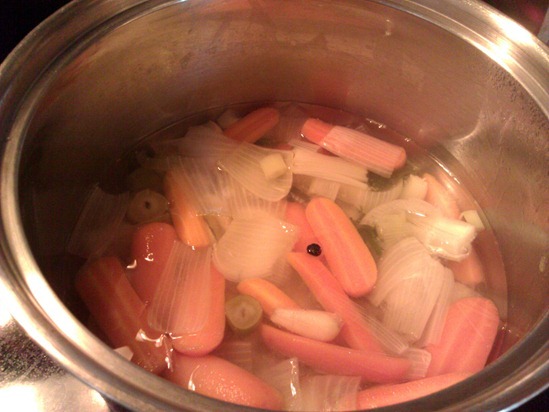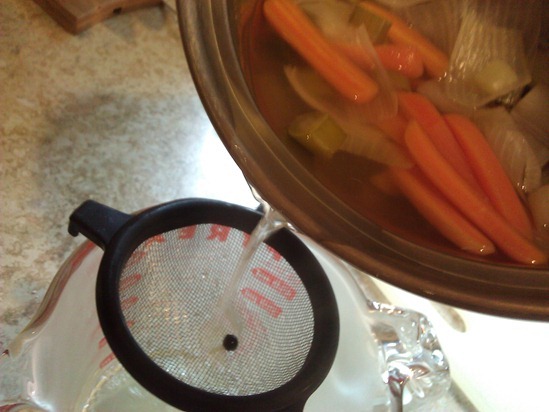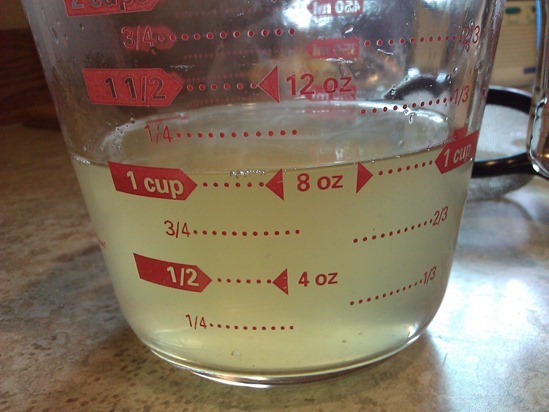How to Prepare Your Vegetable Garden for a Harsh Winter
10.5 years ago carrot, garden maintenance, guest post, kale, winter garden
According to Game of Thrones fans everywhere, winter is coming. And while this may mean snowmen, Christmas decorations and mulled wine for some, for the keen gardener it can mean fingernails bitten to the quick and sleepless nights worrying about cabbages.

Image credit: vegetable garden
Well, maybe we wouldn’t go quite that far – but after all the effort you’ve put into your vegetables, you won’t want your hard work to go to waste for next year. Fear not – we’ve got a guide on how to make sure that your vegetable garden is both ready for next year and useful throughout winter. Here’s how…
Harvest
First things first, take in all of the vegetables that are ready to be harvested and make the most of them. Make sure that you cure and store your produce properly, and you might just end up with a stash that will last all winter long!
Clear out
After you’ve collected all of your delicious vegetables but before you get started on the chutney, it’s time to clear up your yard. If you’re tempted to put this job off, think of it as a treat for your future self when you’re planting more vegetables in the spring. You’ll be glad you put the groundwork in when May rolls around! While you’re there, prepare perennial vegetables for survival by removing old foliage and stems.
Make your garden useful throughout winter
Though it may seem like all plants are dead in winter, there are a few vegetables that will actually be ready for harvesting when it’s very cold outside, so with a little preparation and clever planting you can make your garden produce food until late in the season.
- Carrots are actually sweeter when harvested after the frost. Plant them around late August or early September and cover them with straw for a little insulation.
- Plant kale and collards in mid-August and harvest young leaves from October onwards.
- It’s best to plant Spinach around four to six weeks before the first frost of winter – again, cover with straw, then harvest in late winter or early spring.
- November is the ideal time to plant overwintering onions.
- Don’t have space in the pantry for all of your produce? Don’t worry – your garden can act as a fridge. Bury cabbages, with their roots still attached and a marker in the soil above so you don’t lose them, and dig them up when you fancy bubble and squeak. Potatoes and carrots will also keep when buried in the garden, but add some straw over the top to protect them.
- Give your vegetables lots of compost and a layer of mulch, for nutrients and protection. And, while the soil is a great protector for vegetables – especially root vegetables – it won’t hurt to give them a little water before a big freeze, when it may be difficult for your plants to reach water. However, be wary of over-watering, which can lead to cold, soggy roots and very unhappy plants.
Plant a cover crop
You may not be using your whole garden to grow overwintering vegetables, so to keep your soil ship shape and ready for spring it’s a good idea to plant a cover crop such as buckwheat or rye. These plants will suppress weed growth, feed bees and keep soil in place, then they’ll act as a ‘green manure’ for your garden by breaking down and providing your soil with lots of lovely nutrients.
About The Author
This guest post was written by Ricky Peterson. Ricky is a keen gardener and loves spending time outdoors, he works at Swallow Aquatics, who sell various pond and garden supplies. Ricky also likes to travel and loves hiking and climbing.
How to make fermented ginger carrots
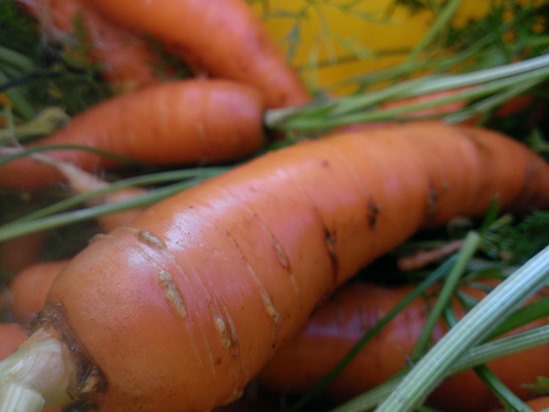
The end of this summer I planted a bunch of carrots one afternoon and I unfortunately pretty much forgot about them. Without proper thinning I ended up with quite a few short and/or twisted carrots which I decided would be perfect to make some fermented ginger carrots.
Step 1: Clean and peel carrots. Peeled and cut the ends off of the carrots and set them aside.
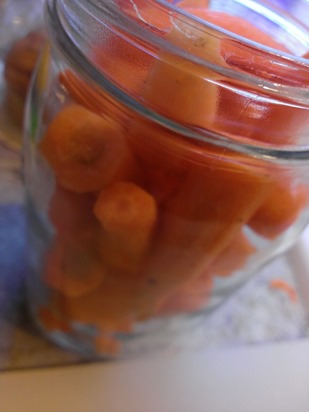
Step 2: Shed the carrots. With a food processor this speeds up the process significantly but you can also do this with a hand shredded or even some good knife work. The smaller the carrots the faster the fermenting process will be. After slicing place carrots into a bowl and mash them a little bit to get some carrot juices flowing. (personally I use a piece of wooden dowel) Finally toss in 1-2 tablespoons of fresh grated ginger.
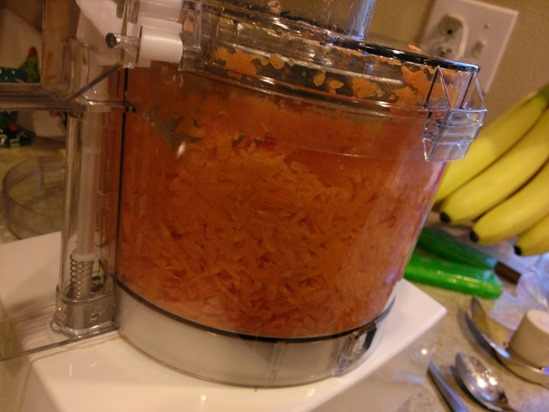
Step 3: Fill with brine and wait. In a separate container mix 1 quart of distilled water with 1.5 tablespoons of sea salt and mix until dissolved. Pour over brine over carrots and cover jar with some cheesecloth. Typically with fermenting I would have to construct something to keep the vegetables from floating to the surface but I have found with carrots they are pretty good about sinking to the bottom on their own.
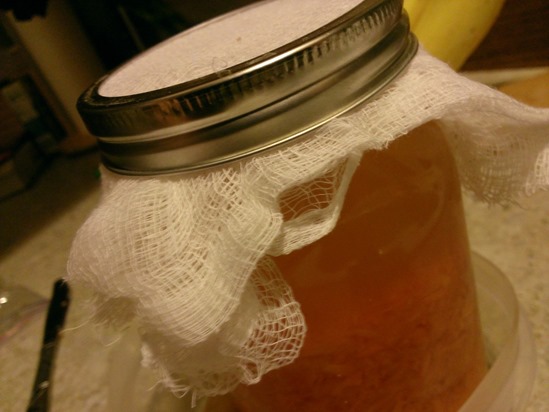
You can let them ferment on a warm counter for a few days or up to a week and a half. Then move them into your refrigerator where they will continue to ferment at a much slower rate until all are consumed.
Tags: recipes
Beware of toddlers and seeds
11 years ago carrot, kids, seedling

Tip to gardeners with two year olds, don’t keep you seeds on the counter within some little hands reach. I was at least happy she was nice enough to bring the seeds from the kitchen counter to the kitchen table to open and pour them out…much easier to clean up than rubbed into the carpet.
Happy seed starting…
the best fertilizers for carrots
12.2 years ago carrot, fertilizer, guest post
Most of the gardeners love to grow carrots because of the low-maintenance efforts. However, you need to pay some attention one week after sowing the seeds. Carrots need some specific soil conditions in order to be healthy and tasteful. Therefore, before sowing the seeds and also after the seed germination, you need to check the soil to see if it is proper for the healthy growth of the plant. A light sandy soil with lots of potassium and some amount of nitrogen, phosphorus and other micronutrients works best of carrots. So, a soil test is necessary before you plant your carrots, so that you can add the nutrients that are deficient in the soil. Some of the fertilizers that are most suitable for carrots are:
Potash
Potash is a fertilizer that provides potassium. Carrots need a lot of potassium for their growth. If your soil is deficient in potassium, you need to add potash in it. Potassium helps carrot plants in their photosynthesis, water as well as nutrient transport and also plant cooling. Deficiency of potassium can make the leaves to curl and their margins will have a burnt look. Stems also become abnormally short and stunted. Alkaline soil, however, does not require a lot of potassium, but if you have an acidic soil, add potash to make it alkaline before you sow the carrot seeds.
Kelp
Kelp enriches the soil with micronutrients such as calcium, magnesium and boron. These are required by the plant for chlorophyll production. If your soil has a micronutrient deficiency, you need to add kelp. Calcium deficiency can cause stems to collapse and leaves to wither off. Less magnesium can lead to yellowing of the leaves. Carrots with boron deficiency have leaves that have a rosette pattern and they usually turn orange when they grow old. So, to help your carrot plants to grow better, nourish the soil with kelp. Avoid overuse of this fertilizer, as it causes the carrots to become fibrous.
NPK fertilizers
Nitrogen, phosphorus and potassium are the three main macronutrients that are required by the carrot plants. Before sowing your seeds, make sure that your soil has a proper percentage of these macronutrients. These nutrients help in photosynthesis, proper root and leaf formation and the overall development of the plant. Their deficiency can lead to pale leaves and stunted plants that can die soon. NPK fertilizers release all the three nutrients and make it suitable for the growth of carrots. This fertilizer can be added to the soil 30 days after the germination of the seeds. For carrot plants, the amount of nitrogen in the fertilizer should be less than potassium and phosphorus. NPK fertilizer with 1-2-2 label can be perfect. Carrot is a root plant and too much of nitrogen can enhance the growth of leaves and make the carrots hairy and cracked. However, take care not to even overuse phosphorus, as it leads to water pollution.
Therefore, before planting carrots, ensure that your soil has all the nutrients required for the proper growth of the plant. If there is a deficiency, add fertilizers. With little care, you can enjoy tasty, healthy and nutritious homegrown carrots, which are far better than the carrots you find in the market. Always avoid over-fertilization, as this might ruin the flavor of the carrots. Remember to water your plants properly after you add fertilizers.
About The Author: Alia is a blogger by profession. She loves writing on luxury and Designer Rugs. Beside this she is very particular about her fitness and exercise daily to stay in shape. She frequently writes articles related to plastic pollution for her blog Ecofriend.
How to make vegetable stock
12.7 years ago carrot, leeks, onions, parsley, stock, vegetables
Vegetable stock is a great way to infuse some great flavors and nutrients to your food. There are the obvious additions such as soups, but I also like to add to staples such as rice and mashed potatoes and even my most fussy vegetable eaters do not even notice.
I didn’t have a lot of spare vegetables so I made a small batch just for the rice I was making for dinner. You can use pretty much any spare root vegetables you have in your garden or refrigerator. For non-root varieties celery, tomatoes (especially good if making minestrone soup), corn, and other fresh herbs can also be good additions…general rule if you find it in soup good chance it can help your vegetable stock’s flavor. For be this included some bunching onions, leek, and some baby carrots from the garden.
Homemade vegetable stock recipe
- 3 bunching onions (white and light green areas) chopped in 2 pieces
- 5 baby carrots sliced in half
- 1 leek cut in half
- 1 sprig of parsley
- 1/2 bay leaf
- 4 peppercorns
- 2.5 cups cold water
Directions: Cook at low heat for at least 30 minutes (I normally go up to an hour). This should add a great aroma around your house with kids asking where the chicken noodle soup is. Now simply strain the stock into a container (I normally use a large spoon when pouring into my strainer but was difficult to hold a pan, spoon, and a camera at the same time) I then take the remaining vegetables and add to my compost bin…you could also have a few carrots as a snack but not going to be much flavor nor nutrients left…guess it pretty much is fiber supplement at this point.
Once you have strained your now rendered vegetable stock you can use immediately or refrigerate in a sealed container for about a week or freeze for up to 6 months.
WARNING: Once you try you homemade version of vegetable stock you probably will not be able to go back to the canned version again.
Growing carrot patterns with DIY seed planting sheets
12.9 years ago carrot, outdoor seed starting, seed planting sheets
My daughter likes to plant seeds but when working with smaller seeds it can be difficult to plant these seeds especially the farther the location is from edge of the garden bed. I have been thinking about solving this problem with a seed strip which can be made using burlap, newspaper, toilet paper, or any sort of paper for that matter. Next you simply stick the seeds to the paper at the appropriate spacing, let them dry and roll out as far as you want to plant. This allows you to get your seeds ready in the comfort of your favorite chair to prepare your seeds and not hunched over your garden with an aching back.
I a simple seed planting strip would have done well for what I was planning but I decided to go with the creation of my own carrot seed planting strip template that allows you to grow in the pattern of the vegetable you are growing. Completely not necessary I know but it kept my daughter occupied working on the “craft” indoors this morning.
Step 1: Get you materials. Start by downloading and printing a carrot seed planting strip template. In the picture below I printed out two copies and glued them together for a few extra carrots. Next you need some glue, a great option is to mix a little flour and water together to the consistency of toothpaste, but I wanted to keep the mess to a minimum and used good ole school glue stick.

Step 2: Glue on the seeds. Take a small dab of your glue and put a drop on each circle on the template. Drop a 1-2 seeds on each glued circle and allow to dry. Once dry I give the paper a quick shake to find any seeds that did not stick and reapply if needed.
Step 3: Plant your seeds. Make a flat surface with your trowel moving a small layer of soil from your garden bed. Lay down your paper carefully on the soil.
Finally over your paper with a small layer of soil that you removed previously.
Step 4: Water Thoroughly. You need to hydrate the seed to begin germinating but you also want to start breaking down the paper and glue to not inhibit those young roots from penetrating the paper.
This was a fun project to do with my daughter, but also considering this is a good way to get some prep work done ahead of time to make the take of planting (here in WA is many times in the rain) a much quicker task. This can be great for crops you grow multiple times per season. You can get your seeds out once, make your seed planting sheets with the appropriate planting dates and bring them out to the garden as needed.

